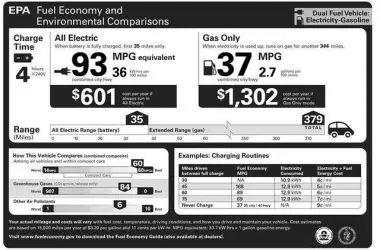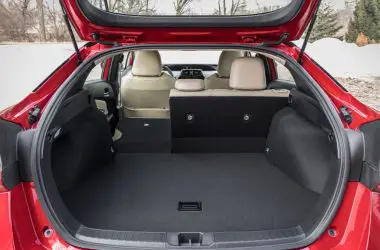What is Headroom in a Car?
Headroom refers to the amount of open vertical space available between the top of an automobile passenger’s head and the ceiling of the vehicle interior (source: https://www.seat.com/car-terms/h/headroom). The term itself comes from the idea of having enough “room for one’s head” inside the vehicle cabin area. Headroom is an important factor for passenger comfort, as insufficient headroom can make the interior feel cramped and restrictive.
The main purpose of headroom is to provide adequate open space above seated passengers, allowing sufficient clearance so their heads do not touch the roof while seated in a normal position. With proper headroom, passengers can sit comfortably without having to slouch or lean forward. Having ample headroom creates an open, airy environment and prevents a closed-in feeling (source: https://www.autotrader.com/car-shopping/car-specs-why-theyre-important). Overall, headroom is a key interior dimension designed for passenger comfort and ergonomics.
How Headroom is Measured
Headroom is measured from the point of maximum height on the seat cushion to the lowest protruding object in the roof liner above it. Automakers use special telescoping measurement rods to take this measurement.
To account for variations in occupant height, most automakers measure headroom while wearing a standard testing helmet. This helmet adds about 2-3 inches of height to simulate a tall person or someone wearing a hat. The standard Society of Automotive Engineers (SAE) headroom measurement is taken with a 95th percentile male testing dummy, meaning the measurement accommodates 95% of the adult male population.
Some automakers like Honda also measure with a small female dummy to provide headroom specs for both large and small occupants. Most automakers only publish one standard headroom measurement taken with the testing helmet rather than publishing separate numbers for front and rear seats.
According to Reddit users and industry experts, the standard testing helmet typically adds 2-3 inches of height beyond the bare head. This ensures the published headroom measurement accommodates enough extra space for most occupants and their hair or hats.
Recommended Headroom
Automakers generally recommend having at least 2-3 inches of headroom in the front seats and 1-2 inches in the rear seats for comfort. However, recommendations vary between automakers:
General Motors recommends at least 2 inches of headroom for front seats and 1 inch for rear seats. Ford recommends at least 3 inches for front and 1 inch for rear. Toyota recommends 2-3 inches for front and 1-2 inches for rear seats.
More headroom is recommended for front seats since drivers need visibility and space to move safely. Rear seats can have slightly less headroom since passengers don’t need as much space.
Over time, recommended headroom has increased as automakers design vehicles with more interior space. In the 1950s-60s, headroom was often less than 2 inches since vehicles were smaller. Modern vehicles have increased in size and now strive for 3+ inches of space.
Factors Affecting Headroom
There are several key factors that affect the headroom available in a vehicle:
Roof Height and Shape: Vehicles with higher, more upright roofs provide more headroom than those with lower or more sloped roofs. The overall height and shape of the roofline has a major impact.
Seat Design and Placement: How seats are shaped and positioned influences headroom. Seats that are lower and thinner tend to allow for more space above. The distance between the seat and roof matters as well.
Suspension: The suspension system affects how much the body of a vehicle rises and falls. Stiffer suspensions generally maintain more consistent headroom while driving. Softer suspensions allow more body roll, which can reduce headroom temporarily.
Headroom in Different Vehicle Types
Headroom varies significantly between different types of vehicles. Sedans tend to have a bit more headroom than comparably sized SUVs, especially in the rear seats. The higher ride height and cargo area of SUVs mean the roofline slopes downward more sharply in the rear passenger area. Trucks have ample headroom in both the front and rear seats, while sports cars and coupes sacrifice headroom for a sloped, aerodynamic roofline.
Newer model year vehicles across all segments tend to have more headroom than older counterparts, as automotive design has trended toward cabin spaciousness in recent decades. For example, a 2022 Honda Civic has over an inch more front headroom than a 1990 Civic. SUVs like the Toyota RAV4 have also grown larger and taller over successive generations.
The best way to compare headroom between specific vehicles is to consult specification measurements published by the manufacturer. Online car shopping sites like Edmunds also compile headroom measurements across makes and models for easy comparison. Test driving different vehicles can also give a first-hand feel for relative cabin space.
Calculating Your Vehicle’s Headroom
The most direct way to measure headroom in a vehicle is to calculate the distance between the roof and the seat bottom. This vertical measurement represents the maximum space available for an occupant’s head before it touches the ceiling.
Since driver’s seats often adjust for height, the headroom measurement should account for seat adjustments. Measure with the seat positioned for the height of the intended driver or passenger. Online headroom calculators take this into account by having you input your height.
There are a few online headroom calculators that allow you to input your height and a vehicle make/model to estimate the headroom you’ll have. These calculators have databases of interior dimensions for many vehicles. Just input your information and the calculator estimates your head clearance based on your height and the roof height of that vehicle model.
While calculators provide an estimate, the best way to directly measure the headroom in a specific vehicle is to physically sit inside and determine if you have adequate vertical space. Everyone’s proportions are a little different, so it’s best to test the headroom yourself if possible.
Headroom and Driver Comfort
Adequate headroom is important for driver comfort, alertness, and safety. Insufficient overhead space can contribute to driver fatigue and discomfort over time.
Limited headroom forces drivers to slouch down or tilt their head to one side, resulting in poor posture. This can lead to back, neck, and shoulder pain or stiffness during and after driving. Proper headroom allows drivers to sit upright with the optimal vision angle, keeping their eyes on the road.
Driving while hunched over or craning your neck can also impact safety by reducing peripheral vision or causing distractions. With ample headroom, drivers can fully rotate their head to check mirrors and blind spots. They have a better line of sight to spot potential hazards on the road.
Reviews of vehicles like the Suzuki Farm Worker 4×4 praise the cabin’s excellent headroom and driver comfort. The spacious interior allows for an upright, relaxed driving position even for taller drivers. This enhances driver focus and control, contributing to reduced fatigue over long journeys. Sufficient overhead clearance provides a more enjoyable and safer ride.
Headroom and Passenger Comfort
Proper headroom for passengers in a vehicle is important for their comfort and safety. Headroom and legroom work hand-in-hand in providing sufficient space for passengers to sit comfortably. Tall passengers need adequate headroom clearance so they are not hitting or brushing the ceiling of the vehicle, as well as enough legroom to avoid cramped, bent-knee postures.
Lack of headroom can be extremely uncomfortable for tall passengers, with their hair brushing the ceiling or headrest and a feeling of being cramped. In smaller cars or vehicles with less headroom, it’s important for passengers to find seating positions that maximize the available headroom, such as raising the seat height and minimizing seatback recline.
Headroom also factors into child safety when installing rear-facing child seats. Most child seats have a significant height above the car seat itself for the child’s head clearance. With limited rear seat headroom, it is important to check that a rear-facing child seat can be properly positioned without hitting the vehicle roof or backrest of the front seats.
Improving Headroom
If you find yourself lacking sufficient headroom in your vehicle, there are a few modifications you can make to help maximize the available space. Here are some options to consider:
Seat Modifications
Adjusting your seats can potentially give you a little extra headroom. First, lower your seats as far down as possible. You may also look into replacing the factory seats with racing seats or bucket seats that sit lower to the floor. Aftermarket seats designed for performance driving tend to be thinner and mounted lower than standard seats. Just keep in mind you may lose some leg room.
Suspension Adjustments
Lowering your vehicle’s suspension is another way to gain a bit more headroom, as it brings the roof closer to your head. You can install lowering springs or coilovers to drop your suspension height 1-3 inches. This modification comes with handling tradeoffs, so make sure you adjust accordingly. Lowering too much can reduce functionality.
Removing Headliner
For a more drastic change, you can remove the fabric headliner entirely. This exposes the roof and gives you the maximum possible head clearance. However, it also makes for much more noise and echoes inside the cabin. It’s recommended to only remove a portion of headliner over the driver’s seat area.
Headroom FAQs
Headroom is a term that comes up frequently when discussing vehicle design and passenger comfort. Here are some common questions about headroom:
What are some common headroom questions?
Some frequent headroom questions include:
- How is headroom measured in vehicles?
- What is the recommended headroom clearance?
- How does headroom differ between sedans, SUVs, and trucks?
- What factors affect headroom in a vehicle?
- How can I calculate the headroom in my vehicle?
What are some misconceptions about headroom?
Some common misconceptions include:
- That legroom and headroom are the same thing – legroom refers to space for your legs and feet, while headroom is vertical space.
- That headroom is only about height – while height is a key factor, seat and roof design also impact headroom.
- That trucks automatically have more headroom than cars – headroom ultimately depends on the specific vehicle design.
What are some rules of thumb for headroom?
Some general rules of thumb to keep in mind:
- Aim for at least 2-3 inches of clearance between your head and the roof.
- The more headroom the better for driver comfort and safety.
- Tall vehicles don’t necessarily have more usable headroom if seat height is increased as well.
- Adjustable seats and tilt steering wheels can help maximize headroom.
For more details on calculating and improving headroom, see Example Source 1 and Example Source 2.




